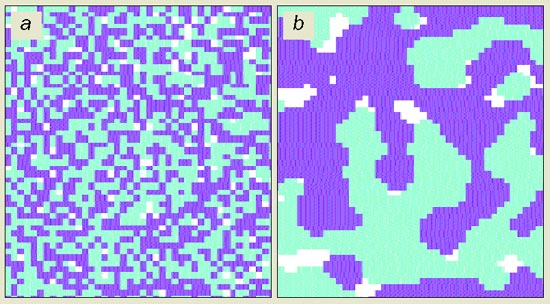A critic on Critical Mass
I recently finished Philip Ball’s Critical Mass.
The bad news: it’s twice as long as it needs to be and his criticisms
of economics are rather odd (no, ability to forecast share prices is not the
test of the subject’s validity). The good news: it’s packed full of fun
stuff about the relevance of various physical and agent-based modelling
techniques to the social sciences. Even better, you can read Ball’s own
summary and find out whether you like it.
Thomas Schelling was there first again with
his chessboard model of racial segregation. The bottom line: racial
preferences which would seem to accommodate mixed neighbourhoods turn
out to lead to extreme segregation, as shown in (b) below.
Robert Axtell, one of the founders of the Sugarscape agent-based modelling system, predicts that within a few years we will be able to run models with billions of agents, rather than Schelling’s 50 or so. Artificial worlds beckon.
